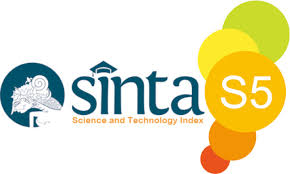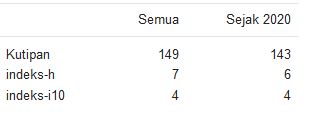Isometric Exercise of Quadriceps and Gluteal Muscle in Patient with Close Femur Fracture
DOI:
https://doi.org/10.46749/83y24034Keywords:
Isometric Exercises, Muscle Strength, lower limb fractureAbstract
Femur fracture is a fracture in the largest bone in the body. The femur requires significant force to fracture. One of the treatments for femoral fracture is reduction and immobilization using traction. Immobilization in traction-attached patients before preoperatively requires isometric exercises to maintain muscle strength. Isometric exercise is a muscle contraction exercise, the patient contracts the muscles without moving the muscles to maintain muscle and prevent atrophy. The purpose of this paper is to identify the effectiveness of isometric exercises to increase isometric muscle strength in patients with lower limb fracture. The methodology used is a case study. The application of isometric exercises can increase muscle strength in patients with skin traction attached. Nurses need to pay attention to factors that can affect the patient's ability to perform isometric exercises so that the results obtained can be more optimal and the patient experiences an increase in the ability of his limbs.
References
Amponsah, G., & Gorleku, P. N. (2015). Bony Injuries in Trauma Patients Diagnosed by Radiological Examination. Ghana Medical Journal, 49(2), 97–101. https://doi.org/10.4314/gmj.v49i2.6
Anwer, S., & Alghadir, A. (2014). Effect of isometric quadriceps exercise on muscle strength, pain, and function in patients with knee osteoarthritis: A randomized controlled study. Journal of Physical Therapy Science, 26(5), 745–748. https://doi.org/10.1589/jpts.26.745
Black, J. M., & Hawks, J. H. (2014). Medical Surgical Nursing: Clinical Management For Positive Outcomes. Misoouri: Elsevier Saunders.
Herdman, H. T., & Kamitsuru, S. (2018). NANDA International Nursing Diagnoses Definitions and Classification 2018–2020 (Eleventh E). Thieme Publishers, 11(3), 55. Retrieved from https://www.m-culture.go.th/mculture_th/download/king9/Glossary_about_HM_King_Bhumibol_Adulyadej’s_Funeral.pdf
Khosrojerdi, H., Tajabadi, A., Amadani, M., Akrami, R., & Tadayonfar, M. (2018). The Effect of Isometric Exercise on Pain Severity and Muscle Strength of Patients with Lower Limb Fractures : A Randomized Clinical Trial Study. 7(1). https://doi.org/10.5812/msnj.68104.Research
LeMone, Burke, & Bauldoff. (2016). Medical -Surgical Nursing : Critical Thinking Patient Care (5th ed.; A. linda, ed.). Jakarta: ECG.
Mahmoud, Elnaggar, &, & Ahmed. (2017). Influence of Isometric Exercise Training on Quadriceps Muscle Architecture and Strength in Obese Subjects with Knee Osteoarthritis. Www.Ijmrhs.Com International Journal of Medical Research & Health Sciences, 6(3), 1–9. Retrieved from www.ijmrhs.com
Riskesdas, K. (2018). Hasil Utama Riset Kesehata Dasar (RISKESDAS). Journal of Physics A: Mathematical and Theoretical, 44(8), 1–200. https://doi.org/10.1088/1751-8113/44/8/085201
Rittharomya, J., Aree-ue, S., Malathum, P., Orathai, P., & Belza, B. (2020). The Effectiveness of Preoperative Quadriceps Exercise and Diet Control Program for Older Adults Waiting for Total Knee Arthroplasty : A Randomized Controlled Trial. (4), 485–502.
Rudloff, M. I. (2020). FRACTURES OF THE LOWER EXTREMITY. In Campbell’s Operative Orthopaedics, 4-Volume Set (Thirteenth). https://doi.org/10.1016/B978-0-323-37462-0.00054-9
Surahman, Rachmat, & sudibyo. (2016). Metodologi penelitian. Retrieved from http://library1.nida.ac.th/termpaper6/sd/2554/19755.pdf
Willmott, H. (2015). Trauma and Orthopaedics at a Glance. Retrieved from http://ebookcentral.proquest.com/lib/indonesiau-ebooks/detail.action?docID=1998752
Downloads
Published
Issue
Section
License
Copyright (c) 2021 Unit Penelitian dan Pengabdian Masyarakat STIKES Fatmawati

This work is licensed under a Creative Commons Attribution-NonCommercial-ShareAlike 4.0 International License.





